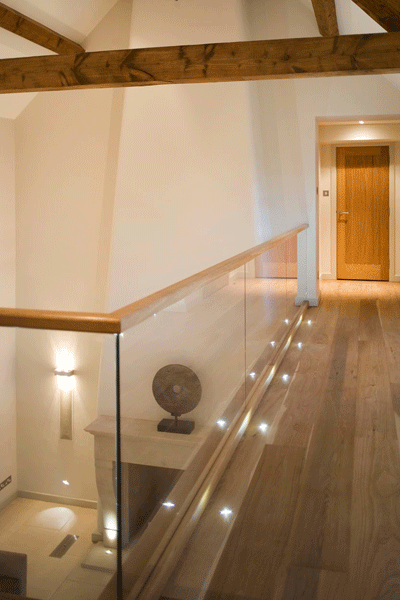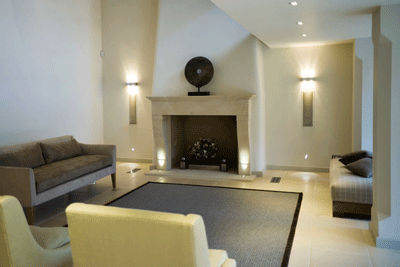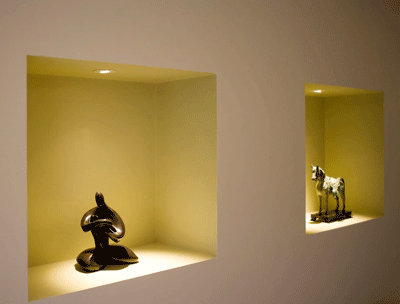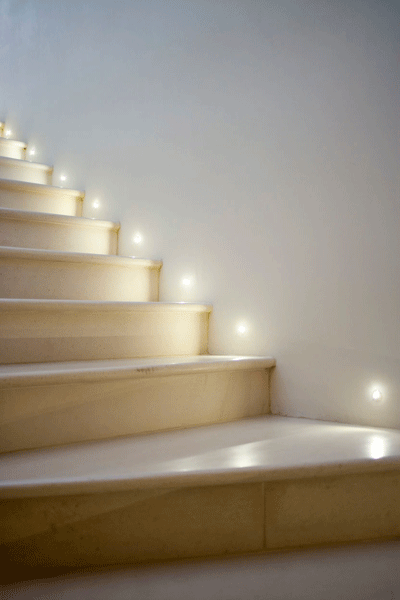The lowdown on low energy lighting
Low energy lightbulbs don't have to be frustrating - they are improving in leaps and bounds and can enhance the atmosphere of an old or a new country house

Due to the recent changes to lighting regulations and the halt in production of incandescent light bulbs, it is imperative that homeowners understand the options and implications when lighting their own home, whether it is an existing property or a new build. Guidance from a professional, such as an architect, is crucial to ensure the right solutions are sought to create an attractive lighting scheme.

Changes to the building regulations state that, from the 1st October 2010, all new dwellings must be lit by at least 75% low energy lighting. The consequences of this stipulation can feel like a minefield for those choosing to build a new home but an expert architect will be up-to-speed with the rules and able to creatively apply them to the property. The positive side of this change in regulation is that your running costs will be lower, due to the considerable reduction in the energy required and bulbs should last longer than traditional and halogen light bulbs. A common misconception is that low voltage is the same as low energy, it isn't. Always check how much energy (in watts) a fitting or bulb will use.

With the recent EuP Directive outlining a halt on the production of traditional light bulbs, homeowners will soon have no choice but to choose low energy light bulbs. Technological advances have made low energy lighting options - the most common being the compact fluorescent which is derided for being slow to light a room - a much higher quality with better colour giving homeowners a more aesthetic yet energy efficient option.
Light emitting diodes (LEDs) are the best low energy lighting solution for a residential scheme, providing a flexible light with good colour and warmth. The requirement for 75% low energy lighting can be achieved by carefully planning the lighting layout to maximise the features of a home. For more involved lighting schemes, you can employ the services of lighting designer to help create effective and atmospheric lighting schemes, well within the regulation limitations.

LEDs can be used creatively inside the home across a variety of areas such as foot washers to light stair treads and rope lighting to up-light roof lanterns. Externally, a country house can be subtly lit without flooding the countryside; pools of light by the door add great atmosphere to the entrance.

The lighting of the project shown in the corresponding images was designed by Yiangou Architects and Lightmaster Direct. Established in 1981, Yiangou Architects LLP works across the entire country from its base in Cirencester. The aim of the practice is to create the most considered and well-crafted buildings in the country and its work is richly diverse ranging from traditional to contemporary. Rather than adhering to a ‘house style', the practice prefers to focus its creativity and experience on creating buildings that are both beautiful and appropriate.
Follow Yiangou Architects on Twitter: http://twitter.com/YiangouArch
Sign up for the Country Life Newsletter
Exquisite houses, the beauty of Nature, and how to get the most from your life, straight to your inbox.

Yiangou Architects is a member of ProjectBook which has been created to help owners of listed or period properties understand how their buildings work and to help them find appropriate craftsmen, products and specialist information. The online Heritage Register contains over 540 registered businesses, the largest directory of its type in the UK. For more information, visit www.projectbook.co.uk.
Country Life is unlike any other magazine: the only glossy weekly on the newsstand and the only magazine that has been guest-edited by HRH The King not once, but twice. It is a celebration of modern rural life and all its diverse joys and pleasures — that was first published in Queen Victoria's Diamond Jubilee year. Our eclectic mixture of witty and informative content — from the most up-to-date property news and commentary and a coveted glimpse inside some of the UK's best houses and gardens, to gardening, the arts and interior design, written by experts in their field — still cannot be found in print or online, anywhere else.
-
 'Monolithic, multi-layered and quite, quite magnificent. This was love at first bite': Tom Parker Bowles on his lifelong love affair with lasagne
'Monolithic, multi-layered and quite, quite magnificent. This was love at first bite': Tom Parker Bowles on his lifelong love affair with lasagneAn upwardly mobile spaghetti Bolognese, lasagne al forno, with oozing béchamel and layered meaty magnificence, is a bona fide comfort classic, declares Tom Parker Bowles.
By Tom Parker Bowles Published
-
 Country houses, cream teas and Baywatch: Country Life Quiz of the Day, April 24, 2025
Country houses, cream teas and Baywatch: Country Life Quiz of the Day, April 24, 2025Thursday's Quiz of the Day asks exactly how popular Baywatch became.
By Toby Keel Published
